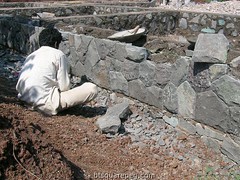Have been waiting a long time for something like this to come to India and finally a Bangalore based company called Shadeflex has tied up with a German company called Textil Bau GmbH.
Shadeflex and their German partner’s sites are under construction at the moment but at least they have a contact page. May just use something like this for the courtyard of the Pune bungalow. This year’s record monsoon has made me think about how dramatically the weather patterns may change in the coming years.



